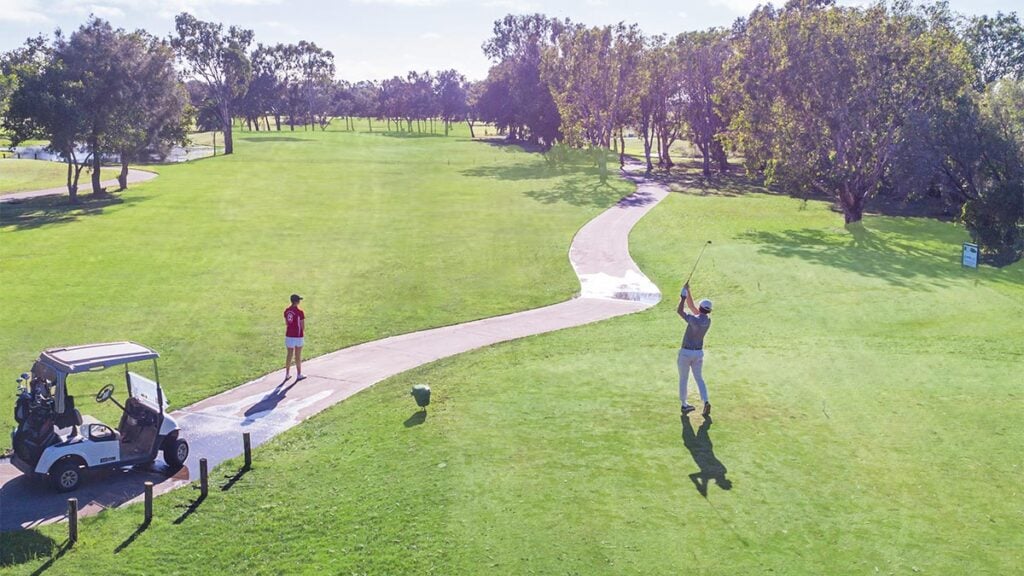Can you change your driver setting on the first tee? What if it rattles mid-round? Here’s what to know
Customisation of clubs to meet your individual needs is one of the great advances in golf technology. The ability to adjust everything from loft to face orientation to weight distribution gives you a chance to make clubs perform better with the attributes of your swing.
The Rules of Golf addresses club alterations in a number of ways under Rule 4.1, including when you can repair them or change playing characteristics. Among the most noteworthy allowances is for a club to be repaired during a round or even used in its damaged state (if possible) without being penalised. We’ll get back to this topic in a minute.
There are, however, a variety of things golfers can’t do according to the rules. For instance, golfers are prohibited from digging a wrench out of their bag in the middle of the round and modifying their driver’s clubface to a different position depending on how they’re playing that day. If you can’t stop slicing, you can’t change the head on your driver so that it’s more closed at address. Nope, sorry.
MORE ON RULES: Rules: Don’t Leave Your Mark
You also can’t apply lead tape or some other substance to a club mid-round to improve performance. Any legal alterations to a club that could change its playing characteristics must be done before or after a round. If you do it during a round, the penalty is severe: you’ll be disqualified if caught.
There is one thing to keep in mind if you made a mid-round adjustment. To get DQ’d, you actually have to make a stroke with the club in its new setting. If you make an adjustment and don’t use the club or return it to its original position before hitting the shot, there is no penalty. To be clear, you might have just concluded that your opponent can only take out a wrench tool and make some adjustments to a club before he or she has teed off for the round, right? Not always. Getting back to the rule that allows golfers to fix damaged equipment during a round, a wrench can be used at any time if it’s for the purpose of fixing something on the club. One thing that often happens to adjustable clubs is that the screw that governs the settings on the hosel or head becomes loose. That rattle can be annoying or even alter the face if the screw becomes too loose, and it’s considered damage that falls under the allowable things you can do to repair a club (see Rule 4.1a(2)/1).
Incidentally, if you had lead tape on your club at the start of a round and it came off the head and will no longer adhere to it, don’t worry. You’re allowed to reach into your golf bag for some fresh strips of tape to replace what was lost.
Also, if you’re wondering what happens when a club’s playing characteristics are morphed by “wear and tear”, like dents or groove damage, it’s still considered conforming and OK to use without need for repair.



